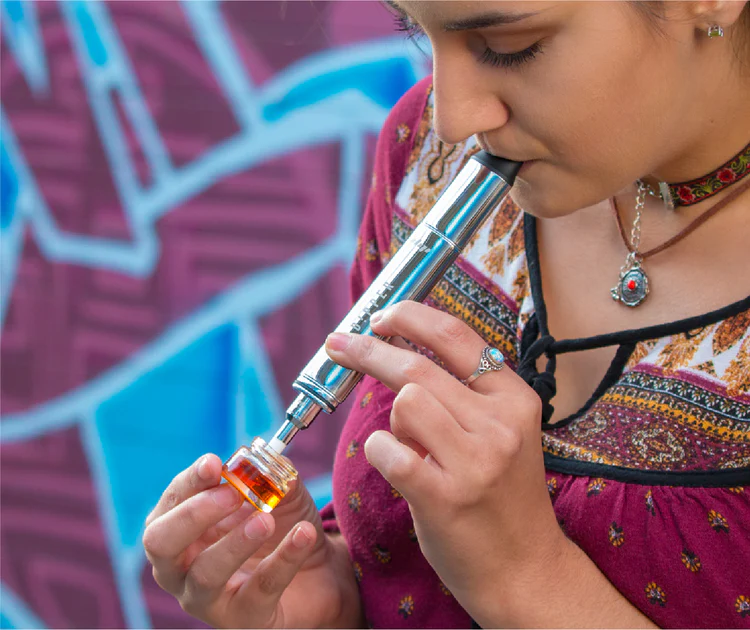What Can I Put Inside My Vaporizer?
Understanding Your Vaporizer’s Compatibility
If you’ve ever asked yourself, “What can I put inside my vaporizer?” you’re not alone. Understanding your vaporizer’s compatibility is one of the most important aspects of getting the best experience from your device. Vaporizers are engineered for specific materials, and using the wrong substance can not only damage the device but also reduce its efficiency and flavor.
Vaporizers generally fall into three categories: devices designed for dry herbs, devices designed for concentrates such as waxes and oils, and multi-use vaporizers that are compatible with both types of material. Knowing which type of vaporizer you own is the first step in ensuring that you enjoy smooth hits, consistent vapor, and maximum flavor every session.
Moreover, choosing the correct material type extends the life of your vaporizer and helps you get the most out of your concentrates or herbs. Using incompatible materials can lead to clogged chambers, burnt coils, or even complete device failure. Therefore, investing a few minutes in understanding your vaporizer can save you time, money, and frustration.
Dry Herbs
Dry herbs are the most commonly used materials in vaporizers, and for a good reason. Legal and safe herbs like hemp, chamomile, lavender, and peppermint offer a natural flavor profile and smooth experience. Each herb has its own aroma and effect, making dry herbs an ideal choice for those who enjoy variety in both taste and experience.
Why Dry Herbs Are Popular
Dry herbs are beloved by users for several reasons:
- Natural flavor: There are no additives, so you taste the plant in its pure form.
- Smooth vapor: When properly ground, herbs provide consistent airflow and minimal harshness.
- Customizable experience: Vaporizers with adjustable temperatures allow you to experiment with different heat levels to extract flavor without combustion.
Additionally, dry herbs are often more affordable and widely available compared to concentrates. They’re perfect for both beginners, who may appreciate a gentle learning curve, and seasoned users who enjoy nuanced flavors.
Tips for Using Dry Herbs
- Grind your herbs properly: A medium-fine grind is ideal. Too fine can clog your device; too coarse can reduce vapor production.
- Dry your herbs if necessary: Moist material can produce steam instead of vapor and can lead to uneven heating.
- Adjust temperature gradually: Start at lower temperatures to enjoy flavor and gradually increase for thicker vapor.
By following these simple practices, you can enjoy a consistent, flavorful, and smooth vaping experience.
Concentrates
Concentrates are becoming increasingly popular among advanced vaporizer users. These include wax, shatter, resins, and oils. They are known for their high potency, rich flavor, and intense vapor production.
Why Concentrates Are Unique
Concentrates provide a very different experience compared to dry herbs:
- Stronger flavor and aroma: Concentrates often preserve the terpenes and natural oils from the plant.
- High potency: A small amount of concentrate can produce a strong effect, making them economical in the long run.
- Dense vapor: Many users enjoy the thick, flavorful clouds that concentrates provide.
However, not all vaporizers are designed for concentrates. Using a dry herb vaporizer with concentrates can damage the heating element or cause residue buildup, so always check device compatibility first.
Tips for Using Concentrates
- Use the right chamber or pod: Many vaporizers include special wax chambers or cartridges for optimal use.
- Avoid overfilling: Too much concentrate can cause leakage or burnt vapor.
- Start with low temperatures: This allows the flavor to develop fully without burning your material.
Using these strategies ensures consistent performance, longer device life, and a more enjoyable vaping session.
Multi-Use Vaporizers
Some vaporizers are built for versatility, allowing both dry herbs and concentrates. These devices often come with interchangeable chambers or pods to optimize each type of material.
Benefits of Multi-Use Vaporizers
- Flexibility: Enjoy a variety of herbs and concentrates without buying multiple devices.
- Cost-effective: One device does it all, saving space and money.
- Experimentation: Users can explore combinations or switch between materials depending on mood or preference.
Tips for Multi-Use Vaporizers
- Always use the correct chamber for each material type to prevent contamination.
- Clean thoroughly between sessions to preserve flavor integrity.
- Follow the manufacturer’s temperature recommendations for each material type.
With proper use, multi-use vaporizers can provide the best of both worlds, combining the flavor of dry herbs with the potency and vapor density of concentrates.
Safety Tips for All Vaporizers
No matter the type of material, safety and maintenance are crucial:
- Clean regularly: Residue buildup can impact flavor and airflow.
- Use proper storage: Keep herbs and concentrates in airtight containers.
- Avoid overheating: Excessive heat can damage your device and reduce vapor quality.
- Follow manufacturer instructions: This is critical for device longevity and safe operation.
By taking care of your vaporizer and using it correctly, you’ll enjoy consistent performance, smooth hits, and long-lasting flavor.
Exploring Legal and Safe Alternatives
Vaporizers can be used with a variety of safe legal herbs beyond hemp. For example:
- Chamomile: Relaxing and aromatic
- Peppermint: Refreshing and smooth
- Lavender: Calming and flavorful
Each herb offers a unique sensory experience. Experimenting with different combinations can make your sessions more enjoyable and interesting. Moreover, certain blends can help with relaxation, focus, or even creativity.
Conclusion
Knowing what you can put inside your vaporizer is essential for a safe, flavorful, and enjoyable experience. Dry herbs, concentrates, or a combination of both (if your device allows) can provide a tailored session that meets your preferences.
Always check device compatibility, use the proper chamber, maintain your device regularly, and experiment safely. With these steps, you can enjoy smooth, potent, and aromatic hits every session, whether you’re a beginner exploring the world of vaporizers or an experienced enthusiast refining your setup.
By understanding your vaporizer and exploring different materials, you’ll unlock new flavors, sensations, and experiences — making each session more enjoyable than the last.
